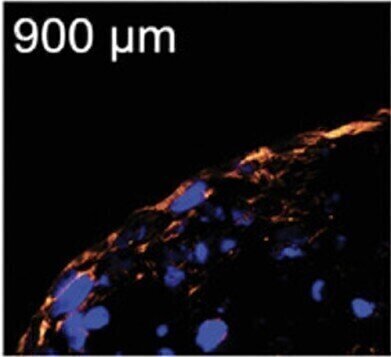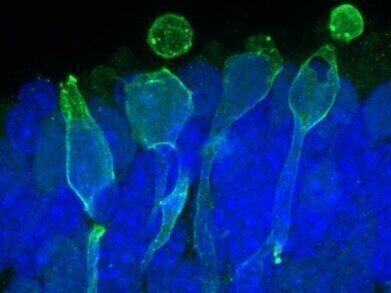-
 Spheroid modelling Blood Brain Barrier using triple culture of human primary astrocytes, pericytes and cerebral microvascular endothelial cells. (courtesy: Dr Mario Rothbauer (Medical University of Vienna & Vienna University of Technology)
Spheroid modelling Blood Brain Barrier using triple culture of human primary astrocytes, pericytes and cerebral microvascular endothelial cells. (courtesy: Dr Mario Rothbauer (Medical University of Vienna & Vienna University of Technology) -
 Retinal organoids grown on Lipidure-coated plate. (courtesy: Dr Valeria Chichagova (Newcells Biotech) and Professor Lako (Newcastle University)
Retinal organoids grown on Lipidure-coated plate. (courtesy: Dr Valeria Chichagova (Newcells Biotech) and Professor Lako (Newcastle University)
Laboratory Products
Creating Cell Repellent Surfaces in Microfluidic Devices
Nov 14 2021
Lipidure® - CM5206 - a superior low attachment solution
AMSBIO's Lipidure® - CM5206 has been used by a team of researchers from the Medical University of Vienna, to coat channels in their novel microfluidic devices, to prevent cell adhesion.
Producing in vitro tissue models for improved drug screening outcomes
The aim of the research by the Medical University of Vienna was to create physiological-relevant in vitro tissue models that offer better predictability and the potential to improve drug screening outcomes in pre-clinical studies. Despite the advances of spheroid models in pharmaceutical screening applications, variations in spheroid size and consequential altered cell responses traditionally have led to non-reproducible and unpredictable results. Having developed a novel microfluidic multisize spheroid array, the researchers characterised it using liver, lung, colon, and skin cells as well as a triple-culture model of the blood-brain barrier to assess the effects of spheroid size on anticancer drug toxicity and compound penetration. The reproducible on-chip generation of 360 spheroids of five dimensions is demonstrated in a recently published paper 'A Microfluidic Multisize Spheroid Array for Multiparametric Screening of Anticancer Drugs and Blood-Brain Barrier Transport Properties'.
Dr Mario Rothbauer, a Group Leader at the Medical University of Vienna, commented: "I've worked with anti-fouling surfaces for cell-based applications my entire career and so far, the Lipidure®-CM5206 has proved to be the most reliable and straight-forward approach for generation of cell repellent surfaces on microtitre plates, as well as more the complex culture environments of microfluidic, lab-on-a-chip and organ-on-a-chip systems. For our latest project we screened a panel of primary and cancer cell lines including lung, liver, gut, dermal fibroblasts and brain endothelial cells; Lipidure®-CM5206 did not let us down a single time throughout those many years."
Lipidure®-CM5206 is a biocompatible and hydrophilic white copolymer made up of repeating units of 2-(methacryloyoxy) ethyl phosphorylcholine (MPC). Lipidure®-CM5206 is designed to mimic the cell membrane surface and its molecular structure is the key for its highly hydrophilic nature and extremely low toxicity.
Lipidure® coating of microtitre plates and microfluidic devices provides a superior low attachment surface for the production of state-of-the-art 3D cell culture. Formation of organoids, spheroids, tumorspheres, embryoid bodies and neurospheres using Lipidure® coated microtitre plates have been demonstrated for cell types including ES and iPS (human and mouse), NIH3T3, pre-adipocytes, HepG2 and other cancer cell lines as well as primary neuronal cells.
More information online
Digital Edition
Lab Asia 31.2 April 2024
April 2024
In This Edition Chromatography Articles - Approaches to troubleshooting an SPE method for the analysis of oligonucleotides (pt i) - High-precision liquid flow processes demand full fluidic c...
View all digital editions
Events
Apr 28 2024 Montreal, Quebec, Canada
May 05 2024 Seville, Spain
InformEx Zone at CPhl North America
May 07 2024 Pennsylvania, PA, USA
May 14 2024 Oklahoma City, OK, USA
May 15 2024 Birmingham, UK


.jpg)














